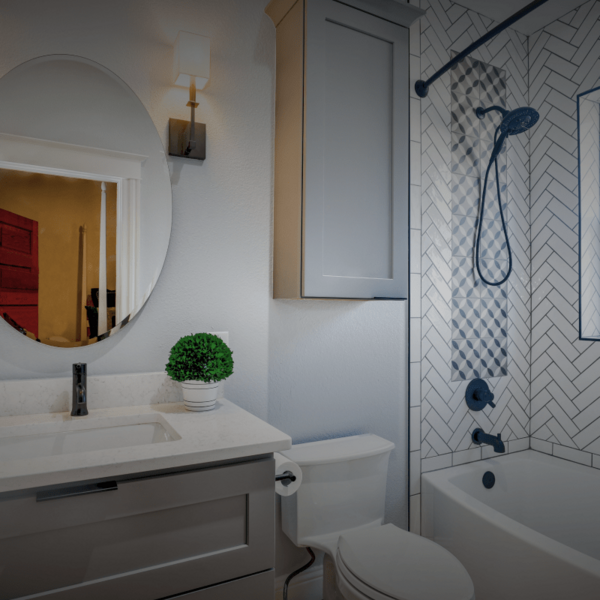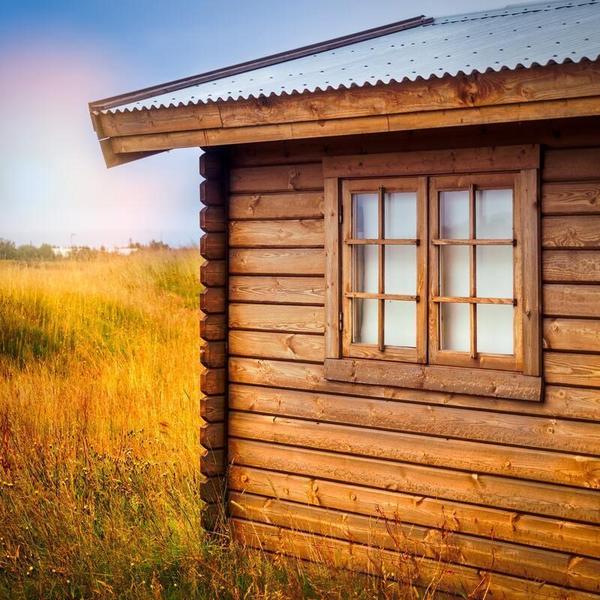In short - yes, but you need to determine what kind of solar system works for you.
To find perfect solar panels for a small house, you need to know your energy needs or power usage, the amount of sunlight in your location, and the size of your roof.
Calculate your electricity usage
You can calculate your current power consumption by checking the power rating on each of your devices, including the lighting and air conditioning.
The spec sheet on each device and appliance gives its wattage in watts of power (W). Multiply that value by the number of hours you expect to run or charge the appliance each day, and you get the daily energy usage.
Let’s take a look at a couple of examples:
- Mini Split for heating and cooling: 3,000 W
- Fridge: 780 W
- LED lights: 100 W
- Cell phone: 30 W
- Laptop 240 W
This totals about 4,150 watts per day. This means that you can cover the power usage of an average tiny house with a 5kW solar panel system.
Alternatively, you can use a solar calculator to determine the size of our solar off-grid system.
You only need to enter your ZIP code and fill in the list of appliances and their power loads.
The calculator will combine the available sun hours at your location and the power usage and recommend the most optimal solar option.
Your tiny house is a good candidate for solar energy when…
These automated solar calculators will give you a rough estimate, but the actual situation “on the ground” might be different.
There are a few factors that will help you decide whether solar panel arrays make sense for your tiny house.
The tiny house gets enough sunlight
The logic is simple - if you live in a part of the world that gets plenty of sunlight throughout the year, you’ll get more renewable energy from your solar panels.
What you’re interested in is called peak sun hours.
A high peak sun hours count is extremely important for tiny houses because it allows you to choose a smaller solar system that will allow you to significantly cut your energy bills.
Available sunlight is an important factor, but there are others that depend more on your actual location.
For example, if your tiny house roof is in shade from trees - they surely keep it cool in the summer - your solar panels won’t generate enough energy as if your roof gets direct sunlight for 5-6 straight hours per day.
The roof has enough space and the right shape
Tiny houses come in all shapes and their roofs are not an exception.
A flat roof that has a rectangular shape is definitely the most desirable, even a rounded or domed roof can work, especially if you use energy-efficient flexible solar panels.
Keep in mind that a 5k solar power kit consists of at least 10 solar panels.
If your roof is too small, you may need to go with high-efficiency solar panels which are always the most expensive option.
If your tiny house doesn’t have the right shape or enough roof space for panels, you can still prop your panels on ground mounts.
Ground solar mounts have many benefits.
You can easily wipe away dust, snow, bird poop, and other debris that reduces the effectiveness of your panels.
Also, with ground mounts in place, you can shade your tiny house while the panels stay in broad sunlight.
The roof slopes in the right direction
Here’s a 5th-grade science question:
There are four roofs:
- roof A faces north;
- roof B faces south;
- roof C faces east;
- roof D faces west.
Which two roofs get the most sunshine hours throughout the day?
The answer depends on which side of the equator you are.
In the northern hemisphere, it’s S and W, and in the southern hemisphere, it’s N and E.
If your roof faces the right direction, your solar production will be higher for the same hours of sunlight.
The easiest way to determine if your roof will get optimal sunshine is to use Google Maps.
Of course, this applies mostly to traditional houses. Things get much easier if your tiny house is mobile. Then you can orient it for the best solar gains.
Just make sure you have a usable roof.
On the other hand, if you plan to travel with your tiny house, it might be difficult to determine your average sun hours.
In this situation, however, you can relieve your solar system from time to time by hooking up to the campground’s utility grid or carrying a gas generator.
Your state or city offers solar incentives or tax credits
If you live in the US, you’re most likely liable for the federal solar tax credit of 26%.
On top of that, states and even cities may offer solar incentives that will help you reduce electricity costs.
Check your local and state energy websites or even ask solar companies what solar rebates and tax credit incentives you can get.
The cost of electrical energy is high where you live
What you pay to the power grid company is directly proportional to what you can save by investing in PV panels.
If you live in a part of the country where the electricity price is high, you should definitely invest in a top-dollar solar panel system.
On the other hand, if the current utility bills are already low, it’s just not worth the hassle.
Building a solar kit for a tiny house - what do you need?
If you know the size of the solar system that you need you can always purchase the ready-made kit.
This excellent 5.3k off-grid solar panel kit consists of (11) 480-watt monocrystalline panels, the solar inverter, wiring, as well as metal roof mounts.
As with everything, what you pay is what you get with these solar kits.
However, many other manufacturers and solar installers compromise on the quality of components in order to come up with more competitive solar quotes.
This is why some homeowners prefer building their own tiny house solar system, using parts from reputable solar companies.
If I had to put a new solar panel system on my tiny house, this is what I’d go with:
Solar panel
480 watt Q Cells Mono XL Bifacial Solar Panel - these high-efficiency panels have solar cells on both sides (bifacial) which means they can soak up a portion of sunlight that reflects from the roof as well.
If you don’t have a limited roof, you can achieve the same power level with 15 300-watt solar panels.
Inverter
PowMr 5000W Pure Sine Wave Power Inverter - there are many types of inverters, but this one works great with both lead-acid and lithium solar batteries. A built-in LCD control panel lets you access the essential functions and see how much solar power is generated at any time.
The set includes an 80 amp MPPT charge controller that ensures the optimal charging of your batteries at different levels of solar generation.
Battery
Renogy 48V 50Ah Smart Lithium Iron Phosphate Battery - Using the superior LiFePO4 chemistry, these batteries deliver 4,500 discharge cycles before their capacity drops to 80%. This is far more than any lead-acid battery can achieve.
The self-heating function comes in handy on those cold mornings when you need your solar system to catch an early start.
Benefits of a tiny house solar system
Become power independent
Connect your tiny house to the grid and you’re automatically vulnerable to power outages. But the whole idea of tiny living is in becoming self-reliant and resilient to the calamities of the modern age.
Whether caused by extreme weather events or peak AC use during heat waves, power outages are a result of climate change.
Fight climate change by cutting your dependence on fossil fuels and becoming resistant to fluctuations in the power grid.
Save on electrical bills
Even if you live in a state or country that has low electricity rates, things might change down the road. A well-calculated and right-sized solar system can significantly reduce and sometimes even completely eliminate your electricity bills, especially if you invest in a solar battery bank.
Live Sustainably
The whole idea of tiny homes is sustainable living. Tiny homes are made of recyclable or recycled materials and are also eco-friendly due to their small carbon footprint. Their emissions, waste, and impact on the local environment are several times smaller than with traditional homes. Solar panels can reduce the impact of these homes even more.
Earn extra money
If you don’t invest in solar batteries to store excess power, your tiny house can become a mini-power plant when you’re not using the energy your solar panels create. You can actually send this power to the grid in exchange for credits. When your credits and energy usage get into balance, you’ll have to pay for 0 kilowatts.
Depending on your location, you can even make some money from the solar feed-in tariff. If you’re in the US, ask about net metering options with your utility company.
Add value to your tiny house
When you upgrade your tiny house with solar panels, you automatically increase its market value. Buyers are always more willing to pay more for clean, renewable energy, especially if they don’t have to plan and install the system themselves.
Become free
Solar power is available almost anywhere in the world. It’s highly unlikely that you’ll build your tiny house beyond the Arctic Circle, so wherever you decide to set your mailbox, you’ll have a steady supply of free energy. Just keep those panels clean and you’re all set.
Wrapping up
Solar energy and tiny houses are the two sides of the same coin. Both concepts promote independence, environmentally-friendly choices, and the ability to set up your abode in the most beautiful locations you can find.
If your tiny house has a usable roof or ground clearing, there’s no reason why you shouldn’t reap the benefits of solar power. As photovoltaic technology is becoming more popular, Solar panels for tiny houses are getting more affordable for homeowners who chose to live out their dream without taking out a mortgage on their house.



